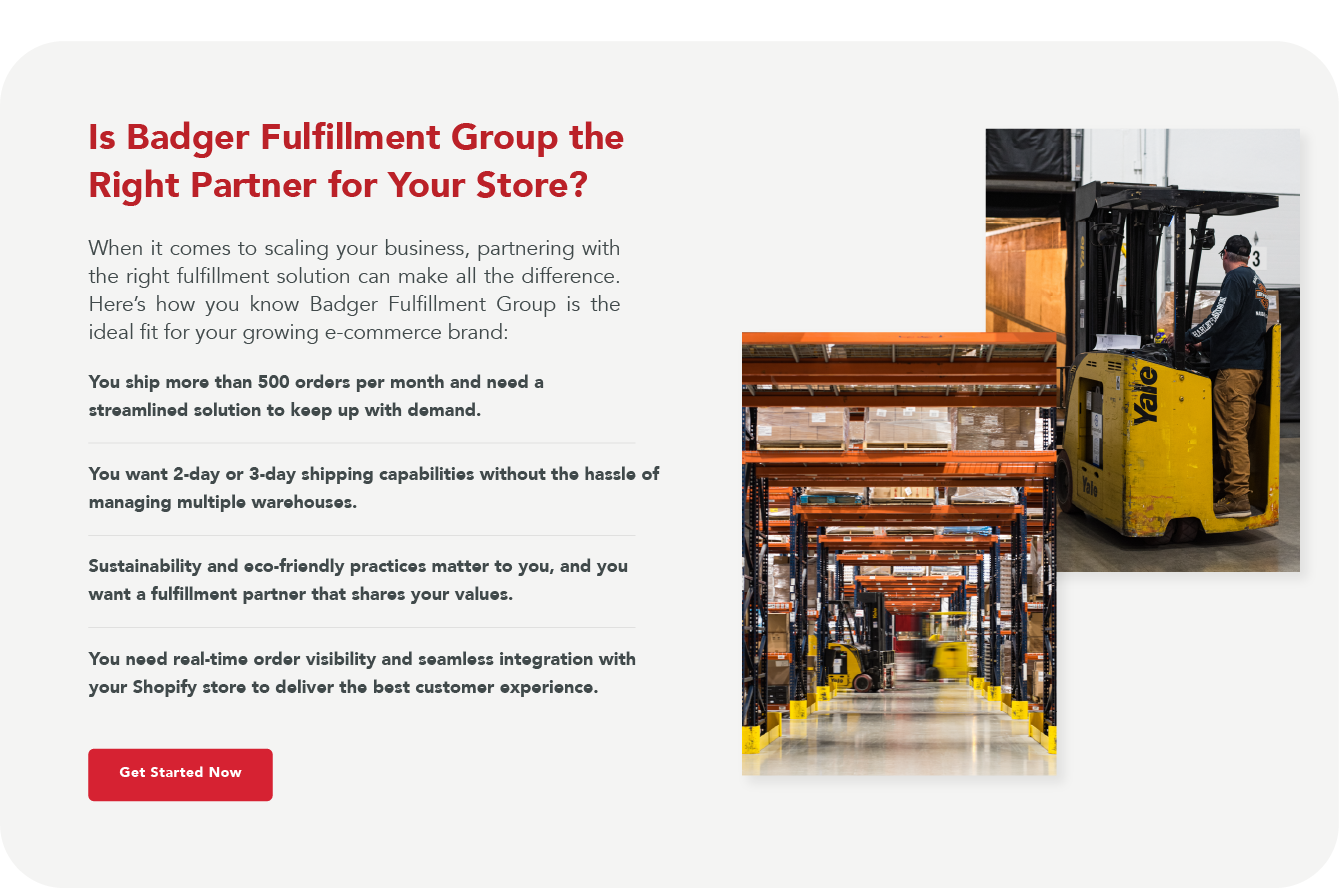E-commerce businesses rely heavily on third-party logistics (3PL) providers to ensure smooth operations and satisfied customers. Monitoring and analyzing 3PLmetrics is essential to evaluating the success of logistics services. Key performance Indicators (KPIs) provide a framework for measuring the success of your 3PL partnership. They help track performance metrics like shipping accuracy, on-time delivery rates, and order fulfillment efficiency. When KPIs are consistently met, it reflects a well-functioning fulfillment process that supports long-term customer satisfaction and operational growth.
Difference between KPIs, Service Level Agreements and Metrics
Effective supply chain management relies on a clear understanding of KPIs, service level agreements (SLAs), and metrics. While these terms are interconnected, each serves a distinct role:
- Key Performance Indicators (KPIs): KPIs are measurable goals that reflect the long-term success of logistics services, focusing on broader objectives like customer satisfaction or operational efficiency.
- Service Level Agreements (SLAs): SLAs are contractual commitments between a business and its 3PL provider, establishing specific performance standards that must be met.
- Metrics: Metrics are detailed data points that track operational processes and provide insights into day-to-day performance.
For example, a metric might track the time it takes for a 3PL’s warehouse team to pick and pack items. The KPI would measure the percentage of orders picked and packed within 24 hours. The SLA would then require the 3PL to pick, pack, and ship at least 95% of all orders within 24 hours to maintain agreed service levels.
Balancing these elements ensures that your 3PL’s logistics services align with your business goals while meeting the high standards customers expect.
Businesses that actively track and use KPIs are 2.5 times more likely to achieve their performance goals compared to those that don’t.
Goods to Shelf Time
Goods to shelf time is a critical metric in inventory management. It measures the time it takes for incoming inventory to move from the receiving dock to being available for order fulfillment. A shorter time minimizes delays, prevents stockouts, and ensures that customers receive their orders on time.
Achieving Accuracy and Perfection in Order Fulfillment
Order accuracy and perfect order rate are two critical metrics that define the success of the fulfillment process. Order accuracy measures how often orders are fulfilled correctly, ensuring the right items, quantities, and conditions are delivered. Low accuracy can lead to customer dissatisfaction, increased shipping costs due to returns, and harm to your brand’s reputation. Meanwhile, the perfect order rate takes a broader view, encompassing order accuracy, timely delivery, and undamaged shipments. Together, these metrics reflect how well your fulfillment process meets service levels and impacts customer satisfaction and loyalty. Leveraging a robust warehouse management system (WMS) and optimizing picking, packing, and shipping processes can significantly improve both metrics, ensuring a seamless and reliable experience for your customers.
On-Time Delivery Rates
Timely delivery is one of the most critical metrics in e-commerce. Customers expect their orders to arrive within the promised timeframe, and delays can erode trust. On-time delivery rates measure how well your 3PL meets these expectations. Optimizing shipping routes, using reliable carriers, and ensuring efficient inventory management can help improve this metric.
Cost per Order Fulfilled
Cost per order fulfilled is a critical metric that calculates the total expense involved in processing and shipping each order, including labor, materials, packaging, and transportation. This metric provides businesses with a clear understanding of the financial efficiency of their fulfillment process. By analyzing cost per order, businesses can identify areas where expenses may be excessive or misallocated, such as inefficient warehouse operations, high packaging costs, or suboptimal shipping routes.
While minimizing costs is essential to maintain profitability, cutting corners can compromise service levels and customer satisfaction. For example, using cheaper, lower-quality packaging materials may reduce costs upfront but could result in damaged shipments and increased return rates, which ultimately lead to higher expenses. Similarly, delays caused by under-staffing or inefficient processes can harm customer trust and affect long-term loyalty.
The average cost per order fulilled for e-commerce businesses typically ranges from $3 to $15 depending on factors such as order size, shipping method, and fulfillment location.
By tracking cost per order fulfilled and making data-driven adjustments, businesses can enhance their operational efficiency with the right 3PL partner without compromising on service levels, ultimately driving customer satisfaction and long-term success.
Return Processing Time
Efficiently managing returns is essential for maintaining customer satisfaction and controlling operational costs. Here’s why return processing time matters:
- Customer Trust: Quickly processing returns—whether through inspection, restocking, or issuing refunds—enhances the customer experience and builds trust.
- Inventory Availability: Fast return processing ensures items are promptly inspected and restocked, making them available for resale and reducing potential stockouts.
- Cost Control: Minimizing return processing time helps lower inventory holding costs and reduces the risk of obsolescence for returned products.
- Operational Efficiency: Streamlined return workflows prevent bottlenecks in the warehouse, enabling smoother day-to-day operations.
Focusing on return processing time allows businesses to turn returns into opportunities for improved customer loyalty and operational success.
Customer Support
Metrics like average response time and issue resolution rate provide a clear picture of customer support quality. Fast and effective support builds trust and mitigates the negative impact of delays or errors in the fulfillment process. These metrics are especially important for e-commerce businesses that rely on positive customer interactions to maintain loyalty.
Scalability
As e-commerce businesses grow, their logistics needs evolve. Scalability metrics evaluate a 3PL provider’s ability to handle increased order volumes without compromising performance metrics like order accuracy and on-time delivery. Metrics such as peak order capacity and seasonal efficiency help assess whether a logistics partner can grow with your business.
Partnering with the Right 3PL Matters
Tracking important 3PL metrics for e-commerce businesses is only half the battle; the real key lies in choosing a logistics partner that prioritizes these metrics and works to exceed them. A 3PL provider like Badger Fulfillment Group understands that metrics such as order accuracy rates, on-time delivery, and cost per order fulfilled aren’t just numbers—they’re benchmarks for customer satisfaction and business success.
Badger’s approach combines advanced technology with a customer-first philosophy. By leveraging tools like a Warehouse Management System (WMS), Badger ensures real-time tracking and precise execution throughout the fulfillment process. Whether it’s optimizing shipping costs, maintaining inventory accuracy, or reducing return processing time, Badger goes beyond industry standards to deliver measurable results.
Choosing a 3PL that tracks and improves the metrics that matter most means more than meeting today’s demands—it sets the foundation for long-term growth and scalability. At Badger Fulfillment Group, these metrics guide every decision, ensuring that your business thrives in a competitive e-commerce landscape. Ready to elevate your logistics strategy? Partner with Badger to turn metrics into measurable success.
Questions and Answers About Important 3PL Metrics for E-Commerce Businesses
- How do 3PL metrics help improve customer satisfaction?
3PL metrics like on-time delivery rates, order accuracy, and shipping speed directly impact customer satisfaction by ensuring timely and accurate order fulfillment. These metrics help businesses identify inefficiencies, make improvements, and consistently meet customer expectations. - What is the role of technology in tracking 3PL metrics?
Technology, such as Warehouse Management Systems (WMS) and Transportation Management Systems (TMS), automates the tracking and analysis of metrics like inventory accuracy, shipping speed, and fulfillment costs. Real-time insights from these tools allow businesses to make data-driven decisions and respond to operational challenges promptly. - How can businesses prioritize which 3PL metrics to track?
Businesses should prioritize metrics that align directly with their goals, such as improving customer satisfaction, reducing shipping costs, or increasing operational efficiency. Key metrics like order accuracy rates, on-time delivery, and cost per order fulfilled often provide the most actionable insights. - What is the impact of return processing metrics on sustainability goals?
Efficient return processing not only reduces inventory holding costs but also minimizes waste by quickly restocking or recycling returned items. Tracking return processing time can help businesses align their operations with sustainability goals by reducing product obsolescence and promoting resource efficiency.






